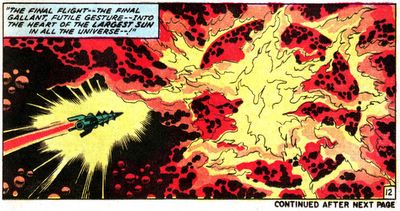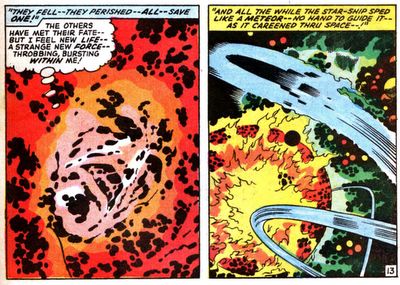Scientists have discovered what appears to be a new kind of cosmic explosion. They call the explosion a hybrid gamma-ray burst.
 As with other gamma-ray bursts, this hybrid burst is likely signalling the birth of a new black hole.
As with other gamma-ray bursts, this hybrid burst is likely signalling the birth of a new black hole. It is unclear, however, what kind of object or objects exploded or merged to create the black hole or, perhaps, something even more bizarre. The hybrid burst exhibits properties of the two known classes of gamma-ray bursts yet possesses features that cannot be explained.

Art by Jack Kirby. Galactus © Marvel Comics.
"Gamma-ray bursts are the most powerful known explosions in the universe and fall into two categories, long and short. The long bursts last for more than two seconds and appear to be from the core collapse (supernova) of massive stars forming a black hole. The short bursts, under two seconds long and often lasting just a few milliseconds, appear to be caused by
the merger of two neutron stars or a neutron star with a black hole, which subsequently creates a new or bigger black hole. The small amount of remaining merger material can only feed the black hole for about a second and hence gives a short period of energy release.
The hybrid burst, called GRB 060614 after the date it was detected, was 1.6 billion light years away in the constellation Indus. The burst lasted for 102 seconds, placing it soundly in long-burst territory. But the burst lacked the hallmark of a supernova, or star explosion, commonly seen shortly after long bursts.
linkAn enigmatic long-lasting -ray burst not accompanied by a bright supernova. 2006. M. Della Valle et al. Nature Nature 444: 1050-1052.















